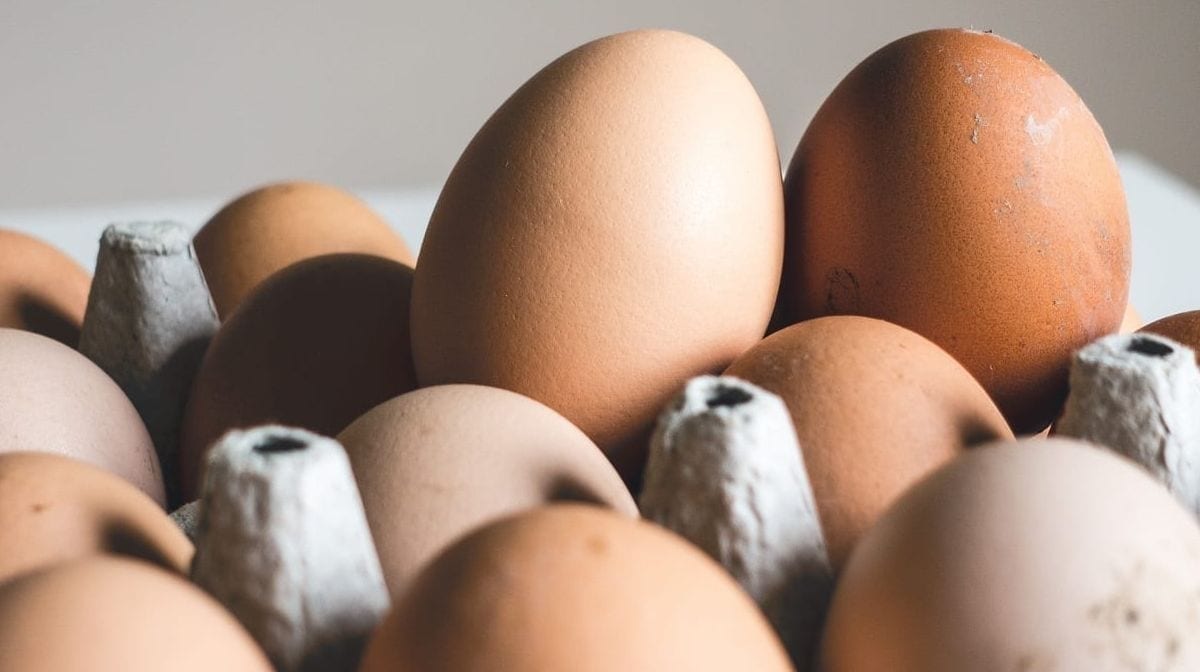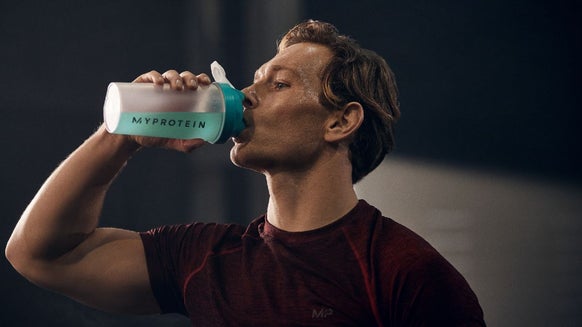10 Natural Food Sources High in Amino Acids

If you’re looking for foods high in protein, then what you really want are foods high in a range of amino acids. Protein is considered to be your body’s most important macronutrient as it supports a range of essential functions and is responsible for the growth and repair of muscles.
Protein also has a big impact on your satiety response to a meal. Essentially, the more protein a meal contains, the fuller you will feel afterwards. This can be very helpful when following an energy restricted, weight loss diet plan.
Not all protein sources are equal and they each contain different amounts of particular amino acids. Additionally, the foods we eat containing protein can vary greatly in the vitamins and minerals they provide. Each of these can be extremely important in maintaining a healthy body.
Due to digestion rates and amino acid compositions, protein sources also have a different impact on muscle protein synthesis, the process in which your body builds muscle.

10 foods high in amino acids
1. Milk
Milk contains both whey and casein protein and can be viewed as nature’s very own protein blend. A pint of milk will contain around 19.3g of protein and 8g of EAAs, making it a great post-workout drink or an easy on the go drink high in amino acids.4
As well as the protein content, milk also provides a high source of calcium which is vitally important for muscle contraction.4
Research also shows that those consuming dairy achieve better fat loss results when following an energy restricted diet. A proposed mechanism for this is the impact calcium has on our body’s fat burning process.5
Evidence has also shown that skimmed milk has a greater effect on muscle protein synthesis than beef and equally as good as a <a href="https://www.myprotein.com/nutrition/protein/whey-protein.list shake, making it one of the best muscle-building foods you can include in your diet.6
2. Eggs
Eggs can be a very versatile amino acid source. Whether scrambled, poached or boiled, 3 eggs will provide 18g of protein.4
In comparison to other protein sources, egg protein has the highest percentage of essential amino acids and is made up of 44.8% EAA. In comparison, cod has 43.5%, pork 43.8%, beef 43.7% and chicken 43.2%.1
Egg whites can be a great way to boost your protein content in an energy-restricted diet, however, the yolk also provides vital micronutrients such as selenium and b-vitamins.4
Research has also shown that post-exercise muscle protein synthesis is enhanced when the whole egg is consumed as opposed to the egg white alone.7
3. Chicken
Like eggs, chicken can be incredibly versatile. Different cuts will provide different amounts of protein and calories. Chicken is made up of 43.2% essential amino acids and is a particularly good source of the branched-chain amino acid isoleucine.1
Making use of the different cuts is also a great way to ensure food prep has plenty of variation with as little hassle as possible. Drumsticks, thighs and wings can be easily cooked in batches and can provide a great protein-filled snack, or make up a protein-dense lunch.
If you’re keeping an eye on your calorie content, make sure you don’t go overboard with oils, flour, and marinades in the cooking process as these will start to rack up the calories quite quickly.
Chicken also has a very high vitamin B3 content and provides a source of zinc, copper, phosphorous, magnesium and iron.4
4. Beef
Beef contains all nine amino acids, including a large amount of valine, lysine, and leucine (the branched-chain amino acids) meaning it has a big positive impact on muscle protein synthesis.10 When it comes to consuming beef, it’s important to bear in mind that the calorie content will vary greatly due to the cut.
Lean minced beef has also shown to be digested easier than a fattier steak.8 This means amino acids from the food will enter the bloodstream sooner. However, the evidence doesn’t show that this makes much of a difference to muscle protein synthesis.
Beef is also a great source of iron and zinc.4 Both of which are very important for a healthy diet.
5. Pork
Although pork can have a high salt content, and cuts like sausages and belly pork can be high in fat and calories, a tender loin pork chop can be an excellent amino acid source. A 4 oz. (113g) tenderloin pork chop will provide 27g of protein, 11.8g EAA, and 260 calories.4
Unlike red meat such as beef, pork is a great source of thiamin.4 Thiamin is a vitamin used in energy metabolism and therefore plays an important role in growth and development.
6. Salmon
Salmon is a great source of omega-3 and there’s extensive evidence for the benefit of consuming fish oil in your diet. These include improved insulin sensitivity (which can improve fat burning and fat storage), better mood, cardiovascular benefit, and increased joint health.9
Although you can supplement fish oil, consuming enough oily fish in your diet is the most beneficial way to increase your omega intake as a fillet of salmon also provides other healthy nutrients. These include vitamin D, vitamin b12 and selenium.4
A 170g fillet will contain around 37g of protein.4 Although a pan-fried fillet of salmon can make for a lovely evening meal, a tin of salmon can provide the same amount of protein and can be a cheap, convenient way of boosting your amino acid and omega-3 intake.
7. Tuna
Tuna is an amino acid-packed food with a great ratio of protein to calories. A 100g portion of tuna provides 29.2g of protein and only 130 calories.4
It is also a good source of selenium, phosphorous, iron, magnesium and potassium.4
8. Cod
Cod is made up of a high percentage of essential amino acids and is particularly high in lysine.4 Lysine is an EAA and plays a major role in calcium absorption and helps your body produce hormones, enzymes, and antibodies.
Cod is a very lean fish and low in fat. A typical fillet weighs 116g will provide 20g protein, 9g EAA, and only 90 calories.4
9. Soya beans
Soybeans are a plant-based, protein-rich food with all 9 essential amino acids, and are rich in vitamins, minerals, and insoluble fibre. The bean also contains a good level of potassium, zinc, iron and vitamin E.4 These are one of the easiest sources of amino acids for vegetarians and vegans.
10. Quinoa
When it comes to plant-based sources of protein, quinoa has one of the highest amounts of the essential amino acid leucine.1 Quinoa can be used as a carbohydrate source and a great way to add protein to salad.
Adding to other plant protein sources, such as soya beans, can be a great way to ensure a vegetarian meal has a wide range of amino acids.
What are amino acids?
Amino acids are the building blocks of protein. The body requires 20 amino acids, some of which it can manufacture itself (non-essential amino acids). This doesn’t mean they’re not important, but that in a healthy state, the body can keep up with the rate of demand for these amino acids without needing to get them from other sources (food).
Out of the 20 amino acids, there are nine known as essential amino acids. Essential amino acids are ones which the body can’t make on its own and they must therefore be consumed through the diet.
Essential Amino Acids
The nine essential amino acids include: histidine, lysine, leucine, methionine, isoleucine, phenylalanine, threonine, valine and tryptophan.
Branched-chain amino acids(BCAAs) are amino acids with a slightly different molecular structure to other amino acids and play an important role in normal physiological processes including protein synthesis (production of proein molecules) and glucose metabolism (production of energy from simple sugars). There are three amino acids from this group including leucine, isoleucine and valine.
It’s worth noting that in order to maximise muscle protein synthesis (MPS), all of the essential amino acids (EAAs) are required. Typically, a dose of 10g EEAs and 20g protein is enough to maximise MPS rates in a sustained way that will build muscle.3
Animal vs. plant-based sources
Plant protein sources tend to have less of the essential amino acids than their animal source counterparts and their protein content is made up of a higher percentage of non-essential amino acids.
This means that in order to have the same impact on muscle protein synthesis, a higher quantity of protein is required to make up for the lack of EAAs.
An essential amino acid of particular importance is leucine. It acts as a trigger that ‘switches on’ the muscle protein synthesis process. This is required for the body to grow and repair muscle tissue. Plant sources tend to have less leucine than animal sources.1
Despite this, plant sources of protein can provide a great source of fibre and if you plan your meals appropriately, you can mix your sources to ensure you get as many different amino acids as possible.
An example of this would be mixing rice which has a low level of lysine but high levels of methionine, with pea protein which is high in lysine but low in methionine.1
You can also supplement some BCAAs alongside your plant source of protein and it will still have the same effect on protein synthesis as an animal source high in leucine.2
Take Home Message
Different protein sources have varying amounts of individual amino acids. By including as many different protein sources as possible in your diet you can make sure you’re not missing out on certain amino acids.
Varying your protein sources can mean you can also include many different vitamins and minerals in your diet.

Liam is a certified sport nutritionist with the International Society of Sport Nutrition and is enrolled on the British Dietetics Association’s Sport and Exercise Nutrition register. He has a Bachelor’s of Science in Sport and Exercise Science and is graduate of the ISSN Diploma in Applied Sport and Exercise Nutrition.
Liam is an experienced personal trainer, helping clients reach their health and fitness goals with practical, evidence informed exercise and nutrition advice. In his spare time Liam has competed in numerous powerlifting competitions and enjoys hill walking, football and expanding his recipe repertoire in the kitchen.Find out more about Liam's experience here.









